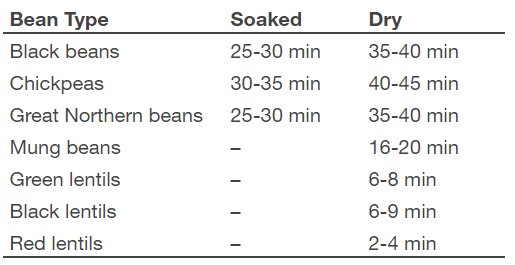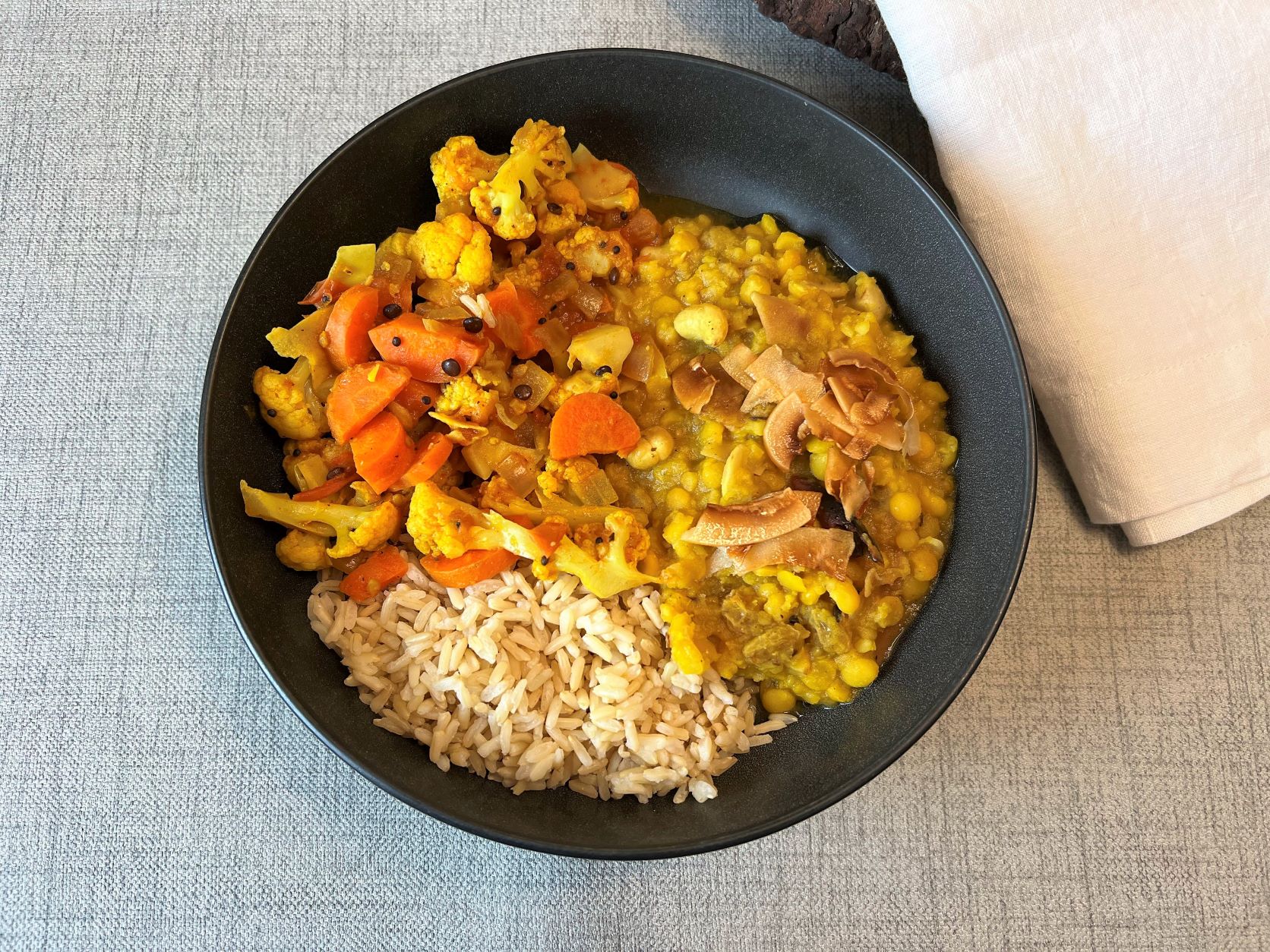As such an important part of a whole food, plant-based diet, I think it’s necessary to dedicate some words to beans. A quick shoutout to beans for being nutritionally amazing, versatile in preparation, and one of the most cost-effective and easily-stored forms of food out there. I could go on in my praise, but should probably get to the main points here. In this post I’ll share some thoughts about how we buy and cook beans, as well as more specific instructions for cooking beans our favorite way (spoiler alert: if you couldn’t tell from the recipes on this blog, it’s in the Instant Pot).
Bean Quantities in Meals
Generally whole, plant-based food is less energy-dense than animal food products. This means in order for a vegan meal to provide you with enough energy and nutrition, you’ll need to eat a larger volume of food than if you were eating meat or other animal-based food. The notable exception to this is more processed meat substitutes like Beyond Burgers and even seitan, which are plenty energy-dense to sub one-for-one with meat. A typical rule of thumb is that in any given meal where beans are the main protein, you should have roughly 1 cup of cooked beans (in addition to a whole grain and plenty of vegetables to round out the macronutrient profile. More on this in another post!). 1 cup of cooked beans = ~1/3 cup dried beans = ~2/3 of one standard can of beans. This may seem like a lot of food, especially if you aren’t used to eating plant-based, but it’s critical and something that is often overlooked in recipes and discussions of plant-based eating.
Dried vs. Canned Beans
I won’t bother detailing out the two opposing sides of this debate (a quick Google search will surely provide enough reading material) but I will say that we almost exclusively use dried beans for a couple of reasons:
- Bulk buying = simplifying grocery lists. Rather than buying something like eight cans of beans per week, we prefer to buy dried beans in bulk sizes that will last weeks or months. (A byproduct of the recent covid times was that when everyone was hoarding toilet paper and dry goods – beans included – we started ordering large bulk sizes of beans online. I love that it simplifies our grocery shopping trips, and we can just refill the jars in the kitchen from our bulk “inventory” every couple of weeks.)
- Texture. It’s much easier to control the texture of beans when cooking them from dry instead of opening a can. Canned beans tend to be mushy in comparison to ones cooked from dry, which isn’t always what you want particularly when the bean is the star of a dish.
- Waste. With dried beans, there are no cans to dispose of and you can cook exactly what you need when you need it.
- Cost. There isn’t a huge cost difference but when you eat a lot of beans, using dried instead of canned does add up to be a savings.
All this being said, we do keep a few cans of “emergency” beans in the pantry because sometimes it’s Thursday at 7pm, you’re hangry, and you realize you forgot to soak and cook beans for your dinner. Dried beans do take a while to cook but if you make it part of your routine, it’s very easy (more on this below).
Soaking and Cooking Beans
This is our go-to method for cooking beans. It’s very easy but does require a bit of advance planning.
- Soak beans: Place your desired quantity of dried beans in a large bowl or dish and cover with water by a few inches. Let soak overnight or for at least 8 hours prior to cooking. If at any point the beans have soaked up water and are no longer submerged, just add some more water to cover them.
- If you only have a few hours, add a pinch of baking soda to the beans and soaking water. This will reduce the cooking time – probably not all the way to the “soaked” column in the table below, but somewhere between soaked and dry.
- Drain and rinse beans: Drain the beans in a colander and rinse them with water.
- Cook beans (Instant Pot method): Place beans in the IP and add water to cover by a couple inches. Add salt – start with about 1/4 tsp. per 1/2 cup of dried beans – and any other seasonings or flavor enhancers you’d like (we like to throw a bay leaf in for added flavor, and sometimes half an onion and a few garlic cloves). Cook the beans on high pressure for the required amount of time – see time chart below and note that depending on your Instant Pot and your beans, the cook time may vary. Then let the IP slow release for 10 minutes before doing a quick release and draining the beans.

Recommended Instant Pot pressure cook times for beans.
After this, let slow release for 10 minutes before doing a quick release and draining. We’ve gotten in the habit of asking ourselves each night or morning, “do we need to soak beans?” And once you’re in the habit, it’s easy to always have beans ready!
 Ginger Tempeh Bowl with Roasted Brassicas and Miso Dressing
Ginger Tempeh Bowl with Roasted Brassicas and Miso Dressing